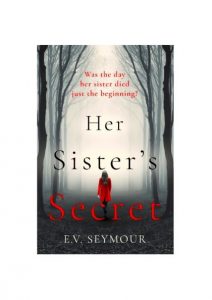Crime Writing Tips
 One of the late great Elmore Leonard’s top tips for writing was ‘Leave out the parts readers tend to skip.’ I’m a devotee, which is why ‘Cut to the chase’ remains my mantra for writing strong crime fiction. In essence and, as brutal as it is, boring bits have to go. Sounds easy, doesn’t it?
One of the late great Elmore Leonard’s top tips for writing was ‘Leave out the parts readers tend to skip.’ I’m a devotee, which is why ‘Cut to the chase’ remains my mantra for writing strong crime fiction. In essence and, as brutal as it is, boring bits have to go. Sounds easy, doesn’t it?
Actually it’s more difficult than you think because (and it’s stating the obvious) we, as writers, like to write and it’s exceptionally painful to cut perfectly reasonable material. In the interests of drama, however, it’s important to identify what needs to stay and what has to go. Just because something might happen in real life, it doesn’t need to appear in your story.
Overcoming the desire to go off on a tangent with, for example, thoroughly researched material, beautiful but lengthy description, scene-setting, or location detail that may run to pages, (because you’ve been there) is often hard to resist. Memorably, I once made the mistake of virtually incorporating a travelogue into one of my spy novels because I’d spent four days in Berlin.
When my then editor read the first draft she said, ‘Great, but can we cut all the stuff in Germany?’ In other words, a little most definitely has its place. We all want to add authenticity and ‘flavouring,’ but exposition and ‘padding’ is no substitute for telling the story, or a delaying tactic for ‘getting on with it.’
To make sure a story cracks on from the start, ensure that the ‘inciting incident’ (the event from which the story sparks) appears fair and square early in the novel. In crime fiction, the murder, heist, abduction, kidnapping, assault (and all the permutations in between) always appears in the first chapter, often on the first page, maybe in the first line. By doing so the reader is immediately hooked into the narrative, which is exactly what you want. If the opening gambit is delayed for dozens of pages, readers won’t connect and, by the time they do, they may have lost interest.
A brilliant way to prevent readers from tuning out is to ensure that your main protagonist stands out from the crowd. Publishers and agents are on the look out for strongly drawn and identifiable main characters. Readers don’t necessarily need to like him or her, but they do need to care if they are to commit and follow for hundreds of pages. For this reason main protagonists also need to care about the job they have to do, whether it’s nailing a murderer, finding a victim, cracking the code, or whatever. Irrespective of gender, if your main protagonist prefers to shoot the breeze, stay in bed, or play the latest game online, instead of overcoming his adversary, think again.
Conflict is the name of the game in crime fiction. Through conflict, you give your main character the opportunity to show the reader what he or she is made of. It’s by applying pressure we see how smart, or vulnerable, he (or she) is. When he triumphs, we cheer him on. If he fails, we suffer with him. To this end, ensure that your ‘bad guys’ are clearly defined.
It’s not enough to refer to shadowy dark forces doing horrible things in dungeons. Give your foe a face. Help us to take a trip inside his or her mind and ensure it’s a terrifying journey. To avoid cliché, humanise him or her; real people are rarely all bad, so give him a redeeming feature – even if it’s only respect for old ladies.
Most crime fiction involves action sequences. You may believe that, if something happens quickly then it needs to be over and done with at breakneck speed on the page. In fact, the reverse is true. To extract maximum tension, the trick is to slow the sequence right down.
Take, as an example, ‘X shot Y and Y dropped down dead.’ If you read it aloud, it sounds pretty sterile. However, written from the point of view of either the assailant or victim, with the action slowed right down so that we get a sense of build-up and suspense, and all those associated emotions, suddenly that one sentence leads to an entire passage and the narrative springs to life.
A slightly offbeat tip but one worth bearing in mind: crime readers are sophisticated. They can sniff out lack of authenticity at fifty paces and, when it comes to knowledge of police procedure or weaponry, many can give crime writers a run for their money. Basically, you can’t take the procedure out of a police procedural, or military out of action adventure so do your homework and, unless you’re an ex-con, intelligence officer, police officer, crime scene investigator, with inside knowledge at your fingertips, you’ll need to get out and about and research, while taking care not to ‘blind the reader with science.’ Emails are fine but picking up a phone and having a conversation with an expert wins hands down.
Finally, and very importantly, ensure that every scene is peppered with revelations to ensure narrative drive, or pace. This is the glue that holds together a story. Without these, a scene fails in its primary function. The really good news is that, if a scene is crammed with ‘turning points’, the reader will feel compelled to keep powering through those pages. Revelations are also the best antidote to superfluous exposition, which brings me neatly back to where I started!
—
E.V. Seymour works as a freelance editor by day and author by night. She has written twelve novels, with two more in the literary pipeline. She writes in two genres: spy/action adventure with male main protagonists, and psychological thriller with female leads. When not writing or reading she tries to play the piano well instead of badly, drinks wine and spends time with her tribe, which is increasing at a spectacular rate. She is represented by Broo Doherty at DHH Literary Agency, London.
https://evseymour.wordpress.com
Twitter: @EveSeymour
HER SISTER’S SECRET
 When Molly Napier’s sister Scarlet is killed in a road accident the whole family are in shock. The police are certain she deliberately caused the crash that killed another, but what could have happened for sensible Scarlet to lose control at the wheel?
When Molly Napier’s sister Scarlet is killed in a road accident the whole family are in shock. The police are certain she deliberately caused the crash that killed another, but what could have happened for sensible Scarlet to lose control at the wheel?
Determined to uncover the truth, Molly begins to dig deeper into her sister’s life. With every question, she uncovers yet more secrets – all connected to her own family’s past. One of them has something to hide.
And then Molly meets Rocco, a stranger with dark secrets of his own.
Perhaps the answers she is searching for are more dangerous than she ever imagined.
https://www.amazon.co.uk/dp/B07RV728JB
Category: Contemporary Women Writers, How To and Tips
Comments (3)
Trackback URL | Comments RSS Feed
Sites That Link to this Post
- Top Picks Thursday! For Writers & Readers 11-21-2019 | The Author Chronicles | November 21, 2019
























Loved the tips here. At the point when I write, I attempt to recollect what I feared or what was terrifying to me and attempt to place those sentiments into books. Thanks a lot for sharing your guide.
You are very welcome and the very best of luck with your writing, Glen.